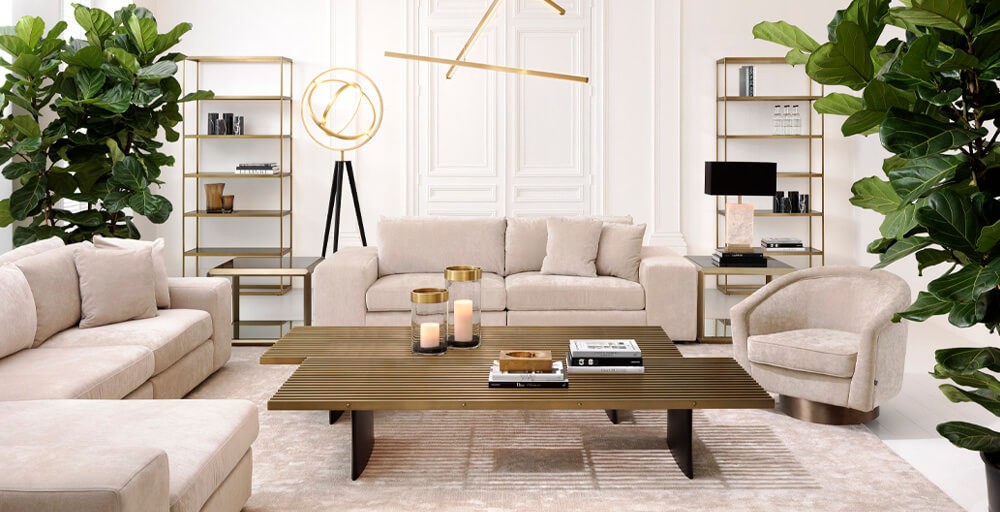Furniture, an integral part of human civilization, has evolved significantly over millennia. What began as basic structures for sitting, sleeping, and storage has transformed into a multifaceted expression of art, design, and functionality. Let’s delve into the fascinating journey of furniture through the ages, exploring its evolution from mere utility to a symbol of culture, luxury, and innovation.
Ancient Beginnings: Form Follows Function The origins of furniture can be traced back to ancient civilizations like Mesopotamia, Egypt, and China. Early furniture was primarily utilitarian, crafted from wood, stone, or metal to serve basic human needs. Chairs, tables, and beds were rudimentary in design, often reflecting the practical needs of the time rather than aesthetic considerations.
Classical Influence: Elegance and Symmetry The classical era of Greece and Rome introduced a shift towards more refined furniture design. Influenced by the principles of symmetry, proportion, and harmony, furniture became symbols of wealth and status. Elaborately carved chairs, ornate tables, and luxurious couches adorned the homes of the affluent, showcasing craftsmanship and artistic flair.
Medieval Craftsmanship: Ornamentation and Symbolism During the Middle Ages, furniture design was heavily influenced by religious and cultural beliefs. Gothic furniture, characterized by intricate carvings and religious motifs, adorned cathedrals and castles. Furniture served not only functional but also symbolic purposes, reflecting the values and beliefs of the society.
Renaissance Revival: Rebirth of Artistry The Renaissance period marked a revival of classical art and culture, leading to a renewed interest in furniture design. Renaissance furniture blended elegance with innovation, featuring rich materials, intricate details, and architectural influences. Cabinets, chests, and tables became canvases for artistic expression, with craftsmen pushing the boundaries of design and craftsmanship.
Baroque Extravagance: Opulence and Grandeur The Baroque era embraced a more lavish and theatrical approach to furniture design. Characterized Liang & Eimil by bold ornamentation, exaggerated proportions, and lavish materials, Baroque furniture reflected the opulence of the aristocracy and monarchy. Elaborate thrones, gilded mirrors, and intricately carved cabinets exemplified the grandeur of the period.
Industrial Revolution: Mass Production and Innovation The Industrial Revolution of the 18th and 19th centuries revolutionized furniture manufacturing. Mass production techniques allowed for the widespread availability of furniture, making it more accessible to the middle class. Innovations such as steam-powered machinery and the use of new materials like steel and plastic transformed the industry, leading to the creation of iconic designs that remain influential to this day.
Modernism and Beyond: Form Meets Function The 20th century saw a proliferation of design movements that challenged traditional notions of furniture. From the Bauhaus principles of simplicity and functionality to the avant-garde experimentation of the Art Deco era, furniture design became a reflection of social, cultural, and technological advancements. Designers like Charles and Ray Eames, Le Corbusier, and Eileen Gray pioneered innovative approaches to furniture, blending form and function in iconic creations that continue to inspire contemporary design.
Contemporary Trends: Sustainability and Individuality In the 21st century, furniture design is characterized by a blend of tradition and innovation. Sustainable practices, eco-friendly materials, and ergonomic considerations have become paramount, reflecting a growing awareness of environmental issues. Moreover, customization and personalization are on the rise, with consumers seeking furniture that reflects their individual style and values.
Conclusion: Where Art Meets Utility The evolution of furniture is a testament to human creativity, ingenuity, and cultural diversity. What began as simple objects of utility has evolved into works of art that embody the spirit of their time. From ancient civilizations to modern-day innovations, furniture continues to inspire, enrich, and enhance the spaces we inhabit, bridging the gap between functionality and artistic expression. As we look to the future, one thing is certain: the story of furniture is far from over, with new chapters of innovation and creativity waiting to be written.